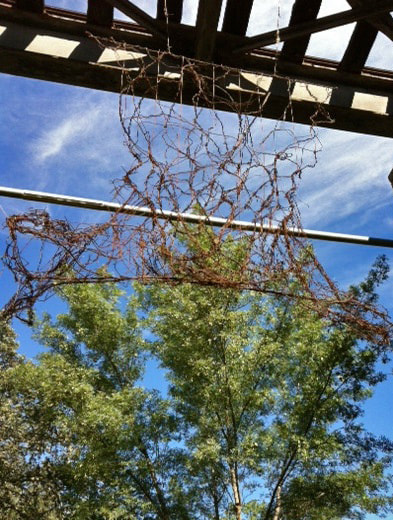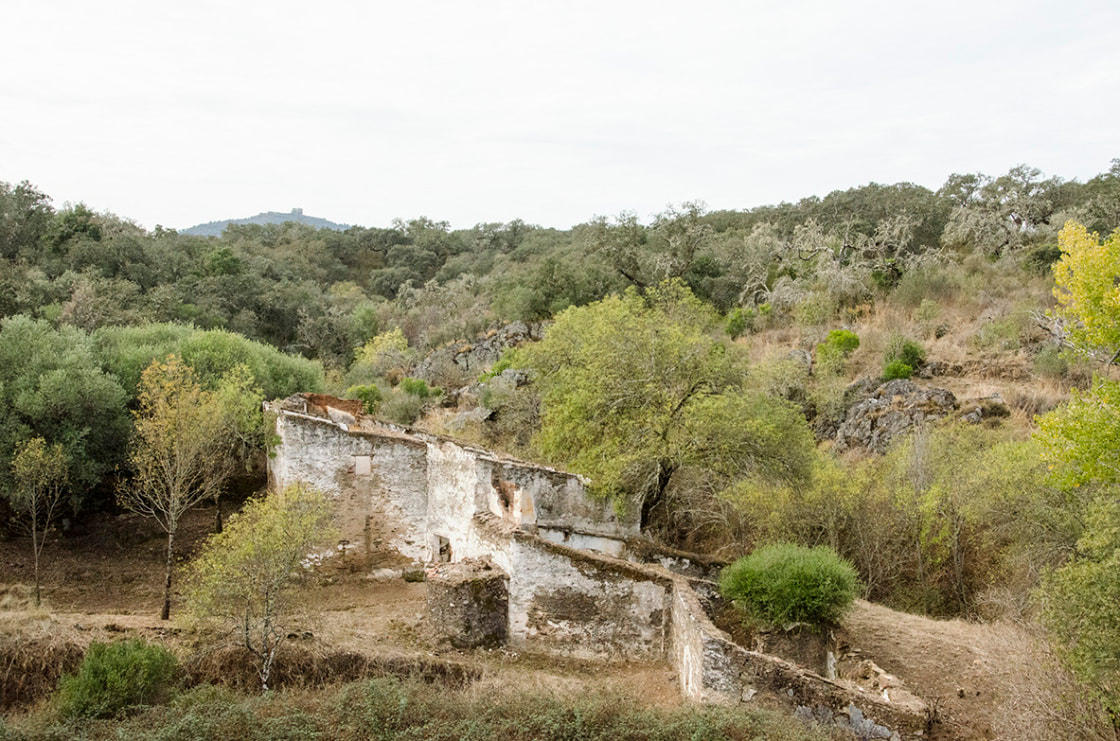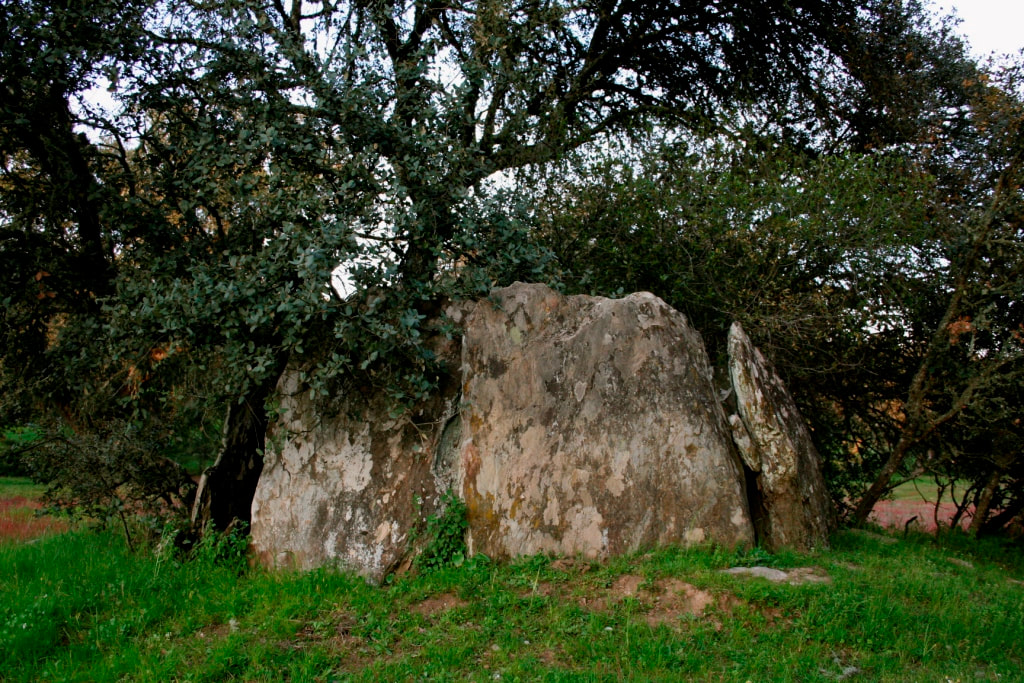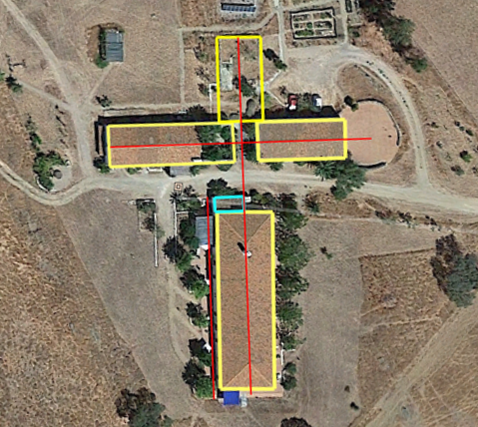Abandoned structures in the surroundings
|
On walking distance are remains of man-made structures, ranging in age from 50 to 6000 years. Some were used by artists in residence to create a site specific installation or performance. This page gives an impression. There are many more traces of human activities in the surrounding nature. And some of them may still be waiting to be discovered.
Cattle roofs (10 minutes’ walk)
Intriguing, rather than beautiful are the remains of some roofs to protect cattle against rain and sun. They are not old, may be 50 years, but strange and spooky, also because they are surrounded by dense vegetation. Until 50 years ago it was grassland with scattered trees, used with de “montado” system, a highly sustainable agricultural system in which the presence of trees are crucial. Julia Mathison (UK) used the place for some site specific installations. Railway bridge (15 minutes) Jonathan Roson (Australia) used the remains of a railway bridge over the San Bras creek to hang a big iron wire embroidery. The wire was waste that he found along the railroad. Hester de Beus (Holland) used the slope of the bridge to make a piece of land-art inspired by the work of Andy Goldsworthy. (Near to this bridge is another, much higher one crossing the Téra river. It is monumental and offers a beautiful viewpoint. A foot path over the bridge is suited for those who do not have fear of height.). |
Watermill (20 minutes)
In the past, landowners had their private miller and bread bakery. The miller of Marmeleira used waterpower from the river Téra to grind the grain of Herdade da Marmeleira and bake the bread for his landowner and employees. The mill may have been abandoned about a century ago when the railway was built: a railway bridge crosses nearly over the mill. But still many traces are visible: the mill stones, the bread oven and the miller’s house. Ruby Fiedler and Peter Emptage (Australia) gave the ruin a thorough clean up and thereby a second life. The video shows the “procession” celebrating the start of this second life. And Sherry Wiggins (USA) together with Luis Branco (Portugal) used the miller’s house for a photo shoot. Chapels (50 minutes) There are several abandoned chapels in the middle of nowhere, within an hour walking. One is in the direction of Vimieiro and another in the direction of Freixo. They lack any pretension and that gives them a serene beauty. The believers must have come from far to attend a service, because apart from one or two farms the nearest neighborhoods are far away. The walk is a bit adventurous because you have the climb over some fences. Prehistoric grave (30 minutes vv) A circle of standing stones and a portal that directs towards sunrise is what remained from the about 7000 years old grave. It is not easy to find because it is fully integrated in the landscape, but once you are there you will certainly sense the power of this object. More info on megalithics in the region is on this page. |
(Railway station (15 minutes)) Until 2006 a railway connected Lisbon and Évora with Estremoz and Vila Viçosa (the last two decades only for cargo and only twice per day). Evoramonte had its own station. Until 2020 the abandoned railway station was used by artists for performances and photoshoots. See the slide show above and video below for impressions. It is sad to know that in 2021 it was converted into tourist’s apartments, even although it may trigger the realization of a plan to make the railway track a cycle and jogging path that connects Évora via Evoramonte with Vila Viçosa. Over a period of nearly ten years several artists used the abandoned station. Bart Drost organised a happening with participation of Ingrid Simons (video), Jozef Kleindienst (reading), Regan Halas (mixed media), Kris Williamson (poems) and Tim Pettit (sound scape). In this happening the artists did improvisations and jam sessions. In other occasions Kimberly Trowbridge did a performance, Aurelie Feriére made a mural and a photo shoot, July Jeunet had a photoshoot, Adoley Dzegge and Luc van der Velde made murals, Sabine Harrer tested a game that she designed as a therapeutic tool to overcome the loss of a still born child, and Eric Layer wrote a theatre play an had a try out performed for which he invited two guest actors. Another mystery is the floor map of our center: see the image below. It has some similarity with the floor map of a church. On the page history of the house we speculate a bit on this feature. |



